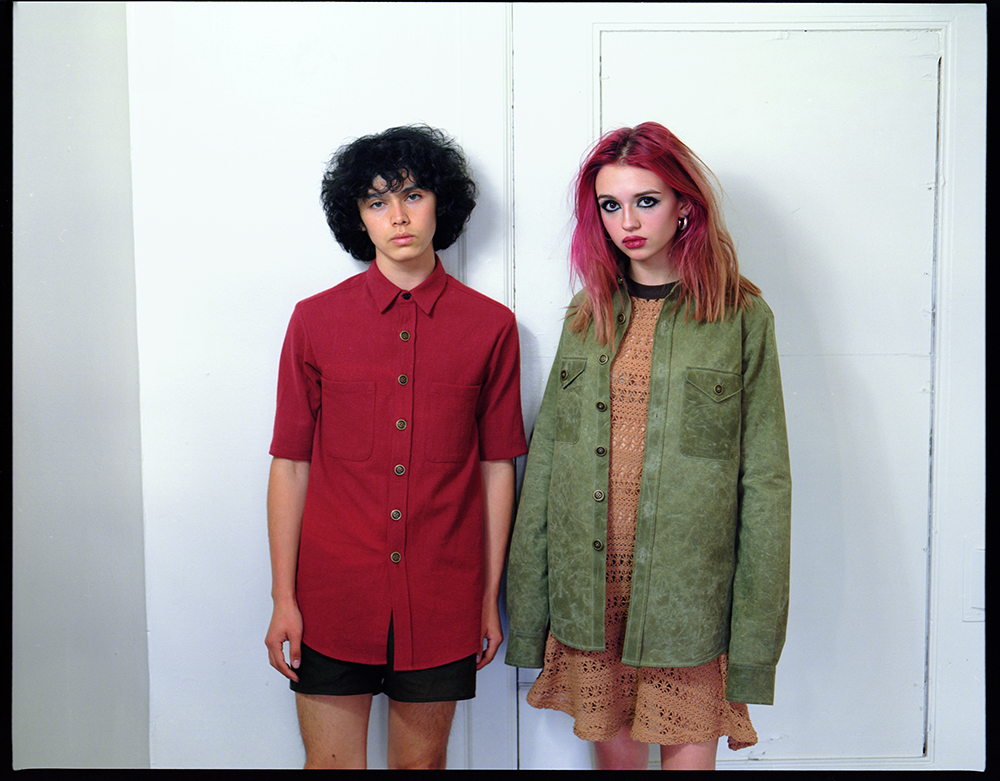Ashley Sky Walker comes from South Central Los Angeles – just like Ice Cube, Issa Rae, Meghan Markle, and many others. Being born and raised here comes with its own realities, but Walker grew up around purpose. One of the people in his life that he admired and looked to is his grandfather, Jimmie, who owned his own dry cleaners. It was that Black ownership and connection to clothing that helped mold Ashley. His mother, who was always in her rebellious son’s corner, enrolled him in Fairfax High School to let him explore his artsy side.
His adult life started at Howard University in Washington, D.C, a school he decided to attend after his high school African-American History teacher Kathy Head subconsciously influenced him to look into the HBCU. “She was such a fly older woman who always represented her HBCU to the fullest throughout her classroom and even through her wardrobe,” he recalled. “After being around her, I went on the Black college tour, and once we made it to Howard, I fell in love.”
Post-Howard, Walker lived in New York City and worked as a photographer for over a decade, having worked with DVF, NIKE, and VIBE Magazine. The latter served as a beacon of pride of his Blackness since his adolescent days. In 2017, he returned to Los Angeles with a new venture in mind, and Leimert Park Threads was born. Named after his neighborhood, it is a unisex clothing brand motivated by the struggle to bring awareness to black, brown, and colored life. Walker aims to create original streetwear pieces that empower and a tribute to the past’s cultural movements.
What motivated you to become a fashion designer?
Honestly, it’s been quite natural since I was a child. I’ve known for a while that I wanted to be creative and have always enjoyed creating things from scratch. Growing up, I was really into X-Men and comic books, and I would redraw the comics in my own way. Storm was my favorite character, and I would spend time recreating her look and reimagining her in more elegant clothing. My grandfather owned a dry cleaner in Leimert Park, and I feel his connection to clothing and me working there with him on top of his own personal style were all motivating factors.
I read your brand launched in 2017. Tell me more about that process. How’d you get started, and how much went into launching Leimert Park Threads.
It took me a while to finally find my place in fashion. Beforehand, I was in New York City working as a photographer. Photography helped me break into the spaces I wanted to be as it pertained to fashion. It allowed me access to all the cool people and events. It wasn’t until I moved back to Los Angeles in 2017, after a decade of being in NYC, that I decided to pursue design full-time because the nature of photography differs between the two cities.
Streetwear was and has been en vogue for a while, and I was inspired by the Sean Jean model, so I decided to start with T-shirts. I wanted a logo and a message that would permeate society through culture, people, and an ingrained image, and for me, that was COLORED. There’s been a lot going on with racial injustices for a while, but it’s really hit an all-time high in modern-day society. Over the years, I’ve been hired to photograph different protests and marches, and it felt right in my heart to put that messaging on my clothing.
What has been the most challenging part of becoming a designer and staying one?
The most challenging part would be the conversation with myself. Realizing that I could make an item that individuals would want to purchase. Realizing that I could produce something that could truly have a place in the market. Keeping it going is something very similar. I’ve been honored to have life show me that I’m on the correct path, but with the good comes the bad. Having a great feature on Issa Rae’s Insecure or having Beyoncé wear a Howard sweater I made doesn’t mean it’s continually going to be sweet or that there’s consistently a prize sitting tight for you.
Congratulations on your Forever 21 Collaboration. What is it about the brand that convinced you to work with them?
The brand approached me and said they were looking to collaborate with three Black artists. I found that really cool and thought it would be an incredible opportunity for all of the apparent reasons from the visibility and royalties. More profound than that, I wanted to ensure the bigger objective was being dealt with. I’m very passionate about the Leimert Park community in Los Angeles. I wanted to make sure that my collection would give back, whether monetary or through a spotlight on local artists/designers.
When you agreed to design for Black History Month, what led you to the designs we see? How did you know this was the right direction?
I’m very inspired by Spike Lee’s School Daze, A Different World, Living Single, and the 90s and 2000s as a whole. When I look back, that was a time when I was most inspired. In those designs, I wanted to include what I’m most inspired by from Black Culture.
How does your Blackness impact your design process?
Undeniably so! It’s who I am; it’s my life. My upbringing wouldn’t have been the same if I weren’t who I am. My Blackness is a portion of my designs through the good and the bad. You know it’s the struggles and the pride of it all. The meme “Black is dangerous, but it’s kind of lit” is a testament. We are a culture that has experienced a tremendous amount of trauma. Being able to address those things and transform them into something beautiful that can impact and empower discussion is a part of my mission and what motivates me.



